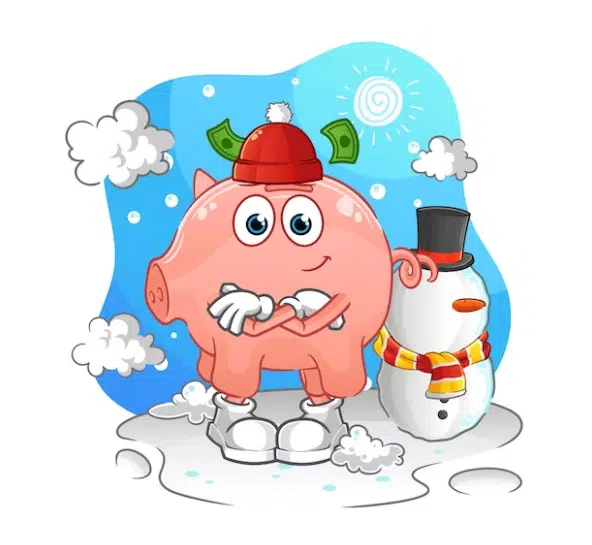Winter months can be harsh in the US, particularly on the wallet. With plunging temperatures, households grapple with skyrocketing utility expenses just to stay warm. However, there are multiple ways to mitigate these costs effectively. The key lies in adopting strategies to save on utility bills without compromising comfort. By taking a proactive stance and tweaking a few daily habits, it’s possible to maintain a cozy home while keeping expenses at bay. This blog will present a range of practical tips to achieve significant savings, ensuring you and your family can endure the cold season more economically.
Before winter sets in, it’s essential to prepare your home. Evaluate its insulation, seal air leaks, and make sure your HVAC system is running efficiently. By doing so, you can prevent unnecessary heat loss. Many homeowners underestimate the impact of proper insulation and maintenance, but these can lead to substantial savings when the cold fronts arrive. Winterizing your home not only enhances warmth but also lessens the load on heating equipment, which translates into lower energy consumption.
Improve home efficiency
Enhancing your home’s efficiency can drastically cut down on energy costs. Begin by inspecting doors, windows, and any potential draft sources. Caulking gaps and adding new weather stripping can prevent warm air from escaping and blast the chilling drafts. Homeowners should also consider upgrading to energy-efficient appliances which consume less power. Modern appliances, particularly those with “Energy Star” ratings, are designed to be more efficient and can lower utility bills substantially, especially in colder months when usage spikes.
In addition to sealing gaps, investing in thermal curtains is another viable option to improve efficiency. They act as a barrier against the cold, ensuring less heat escapes through the windows. When the sun is shining, keep them open to leverage natural warmth, then draw them at night to maintain the heat. Moreover, do not underestimate the power of carpets, which add insulation especially to floors that are above basements or crawl spaces.
Optimize heating system
Another critical aspect of reducing utility expenses during winter is optimizing your heating unit. Start by getting your system inspected and serviced before it needs to be in full-fledged operation. A clean and well-maintained heating system operates more efficiently. Replacing filters regularly, typically every three months, can also improve airflow and increase efficiency, keeping heating costs down. If your home’s heating relies heavily on a central system, ensure that vents and radiators are not blocked by furniture or curtains.
Proper air circulation is crucial for optimal heating. If you are using space heaters, position them strategically and only in areas where you spend most of your time to avoid unnecessary heating expenses. It might also be worthwhile to invest in a more efficient furnace if your current one is outdated. Newer models are designed to provide more heat with less energy. Some homeowners might balk at the initial investment, but the long-term savings in utility bills can justify the expenditure, especially if you plan to stay in the same home for several years.
Leverage alternative solutions
In addition to conventional methods of heating the home, exploring alternative solutions can further save money. For instance, on particularly sunny days, let in as much sunlight as possible to naturally warm your home. Additionally, using ceiling fans in reverse can help push warmer air that collects near the ceiling back into the living space, further aiding in heating efforts. Consider installing solar heaters, which can significantly reduce heating expenses.
Though they require an upfront investment, harnessing solar energy for heating can lower reliance on traditional power sources and reduce monthly utility bills. Many states offer tax credits or incentives for renewable energy installations, making this a feasible option for savings. If the cost of solar solutions is out of reach, other simple measures such as baking more often during the winter can provide extra heat for your living spaces.
Adopt cost-saving habits
Implementing economical habits can make a substantial difference in reducing utility costs. One significant habit is lowering the thermostat when not at home or during sleeping hours. Even reducing the temperature by a few degrees can lead to large savings over the winter months. This small adjustment can be amplified if you use a smart thermostat.
Another beneficial practice is wearing layers of clothing indoors. It allows you to stay comfortable at a lower thermostat setting. Encourage family members to use blankets or wear slippers to keep warm, as it’s cheaper to heat people than the entire home. Also, close off rooms that aren’t in use by shutting doors and closing vents to focus heat where it’s needed most.
Being conscious about energy consumption goes beyond heating. Unplug electronics that aren’t in use. They can still draw power even when turned off. Make sure lights are switched off when not needed and use LED bulbs which consume less electricity. These practices can help in maintaining a low electricity bill year-round, supporting winter savings initiatives.





